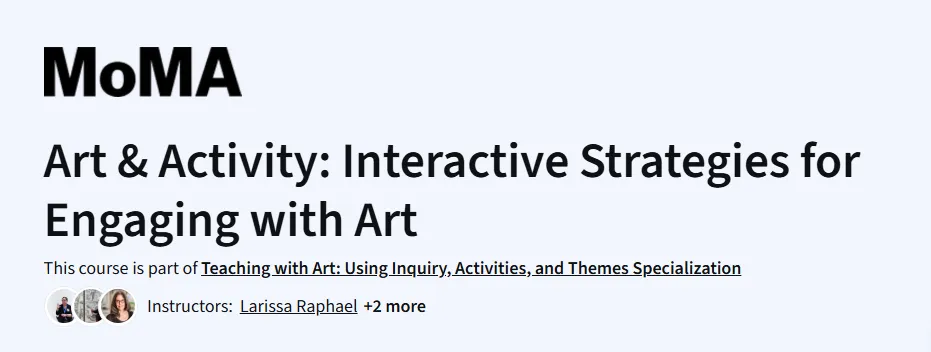What will you learn in Art & Activity: Interactive Strategies for Engaging with Art Course
Engage students in deep discussions and interpretation of artwork using interactive strategies.
Apply inquiry-based teaching methods to explore contemporary and historical art.
Use creative techniques like storytelling, drawing, and movement to connect learners with visual content.
Develop learner-centered lessons focused on dialogue, exploration, and critical thinking.
Facilitate meaningful conversations around identity, culture, and visual expression.
Program Overview
Module 1: Introduction to Teaching with Art
⏳ 1 week
Topics: The role of art in education, why interactivity matters
Hands-on: Analyze how art prompts personal response and curiosity
Module 2: Telling Stories
⏳ 1 week
Topics: Narrative techniques, observation, emotional engagement
Hands-on: Create stories based on artwork and reflect on interpretation
Module 3: Making Connections
⏳ 1 week
Topics: Identity, culture, history, and social context in art
Hands-on: Design lessons that connect artworks to learners’ experiences
Module 4: Taking Action
⏳ 1 week
Topics: Art as a catalyst for conversation and social change
Hands-on: Plan discussions and activities that encourage critical action
Get certificate
Job Outlook
Useful for art educators, museum guides, classroom teachers, and teaching artists.
Enhances student-centered teaching and 21st-century learning skills.
Relevant in both formal education and community-based art settings.
Supports roles in creative education, museum education, and curriculum design.
Explore More Learning Paths
Enhance how you connect people with art through interactive, meaningful engagement. Here are additional learning resources that expand your skills in creativity, audience engagement, and cultural understanding.
Related Courses
Arts and Heritage Management Course
Build skills in managing cultural programs, community engagement, and arts organizations.Art for Beginners: How to Draw & Watercolor Paint 14 Animals Course
Strengthen your creative foundation with hands-on drawing and watercolor techniques.
Related Reading
What Is Knowledge Management
Discover how information, ideas, and experiences are organized and shared — a valuable skill for designing interactive, educational art experiences.
Specification: Art & Activity: Interactive Strategies for Engaging with Art Course
|
FAQs
- No prior music experience required.
- Focuses on music theory fundamentals and ear training.
- Suitable for aspiring musicians, educators, and vocalists.
- Builds skills in sight-singing, rhythm reading, and solfège.
- Prepares learners for advanced music studies or performance.
- Covers major and minor scales, modes, and intervals.
- Teaches triads, seventh chords, and harmonic functions.
- Hands-on exercises for listening and singing practice.
- Reinforces understanding of musical structures.
- Helps improve overall musical fluency and analysis skills.
- Covers time signatures, note values, and rhythm patterns.
- Hands-on clapping and vocal rhythm exercises.
- Includes solfège exercises with real musical examples.
- Prepares learners for ensemble or solo performance.
- Strengthens timing, accuracy, and musical expression.
- Useful for aspiring performers, composers, and music educators.
- Enhances ability to read, interpret, and create music.
- Provides ear training critical for production and arranging.
- Lays groundwork for advanced studies in music theory.
- Supports both classroom and freelance music careers.
- 5 modules, ~1 week per module.
- Covers scales, modes, chords, rhythm, and ear training.
- Self-paced with lifetime access.
- Certificate available upon completion.
- Total duration: ~5 weeks at a moderate pace.





